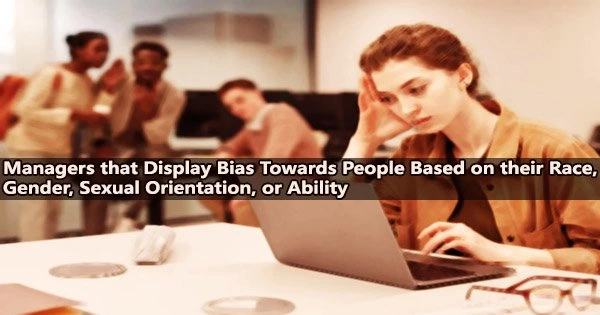In a study that looked at bias in the workplace, a University of Florida researcher discovered that those in management roles frequently display more implicit bias than those who are not in management, both explicitly and implicitly, toward members of marginalized groups.
The study, published this month in Frontiers in Psychology, drew from 10 years of data publicly available from Harvard University’s Project Implicit, a repository of information from more than 5 million people.
In order to compare managers’ perceptions of racial, gender, disability, and sexual orientation biases to those of people in 22 other occupational categories, George Cunningham, professor and chair of the University of Florida Department of Sport Management, and his co-author analyzed responses from people who identified themselves as managers.
“Stereotypes and prejudices harm workplace experiences and advancement opportunities for people from minoritized and subjugated backgrounds,” said Cunningham, who also is director of the Laboratory for Diversity in Sport. “While people undoubtedly experience mistreatment from coworkers and customers, our work shows that managers are also likely to express bias, particularly in implicit forms.”
Although there is a ton of research using the Project Implicit data, Cunningham said he had not come across any that compared biases among the various career groups. Because the web-based test offers occupational codes, he could contrast individuals in other work roles with those whose major function is in management, such as a CEO or various forms of mid-management.
The study’s authors learned that claims of racial, gender and disability discrimination were the most frequently filed with the Equal Employment Opportunity Commission between 1997 and 2021.
Stereotypes and prejudices harm workplace experiences and advancement opportunities for people from minoritized and subjugated backgrounds. While people undoubtedly experience mistreatment from coworkers and customers, our work shows that managers are also likely to express bias, particularly in implicit forms.
Professor George Cunningham
Because sexual orientation hadn’t been a federally protected employment characteristic, they drew data from UCLA’s Williams Institute, which reports that 45% of those who identify as LGBTQ+ have experienced some form of discrimination at work.
“Once we saw that race, gender, disability and sexual orientation-based forms of mistreatment are all prevalent in the U.S. workforce, we determined this warranted examination of managers’ biases in these areas,” Cunningham said.
According to Cunningham, implicit bias influences judgments, decision-making, and behaviors even if it happens naturally and inadvertently. According to research, this unintended discrimination has an impact on many facets of society, including organizational procedures, policing, education, and health care.
Those who have explicit bias are conscious of their views and prejudices toward particular groups.
In Cunningham’s study, implicit biases were assessed using the Implicit Association Test, or IAT.
Explicit attitudes were assessed using the Feeling Thermometer, where participants responded to items measuring their attitudes toward different groups.
“With respect to explicit biases, the scores as we calculated them indicated that people working in management occupations had an explicit bias in favor of people without disabilities, men relative to women working outside the home, White people and heterosexual people,” Cunningham said.
The researchers employed a standard set of degrees for implicit bias ratings, including neutral, slight, moderate, and strong, and discovered managers had a moderate preference for the groups that were in the majority. The results are then divided according to explicit and implicit prejudice, various jobs, and each of the four targeted groups of people.
“Of the 176 comparisons, we found statistically significant differences in 58, or about a third of the time,” Cunningham said.
Managerial respondents to the Project Implicit survey reported comparable levels of prejudice to those who worked in what researchers referred to as “white collar” jobs, such as physicians and those in the business and financial sectors. In comparison to individuals engaged in manual labor and blue-collar occupations including food manufacturing, transportation, and protective services, they were less biased.
According to the study, managers also displayed higher bias than those whose line of work entailed enhancing human condition and safeguarding the environment, such as educators, artists, and social scientists.
“It’s not that managers are more biased than everybody else or that they are less biased than everybody else, but it’s clustered,” Cunningham said. “Our original question was, do they have biases, do they vary from others with different occupation codes, and will that impact claims that employees make? This tells us, yes, they do, and the type of bias depends not only on the focus but whether it’s implicit or explicit.”
Cunningham said their study also showed there is a disconnect between managers’ explicit and implicit bias ratings, especially when it came to disability. Their answers showed that they openly denied having prejudices against individuals with disabilities, despite the fact that their implicit prejudice towards this group was the greatest of all the others.
The value in studies like this, Cunningham said, is to build awareness for our implicit biases.
“The more we’re aware of it, the more likely we are to take steps to help lessen the impact,” he said. “Training, equity advisors, checks and balances and other practices should be imbedded in the system not once-a-year activities.”
“The bigger issue, though, is to change the way our society operates,” he said. “Managers can’t do as much about how society functions, but they can do things about how their organizations function.”
















